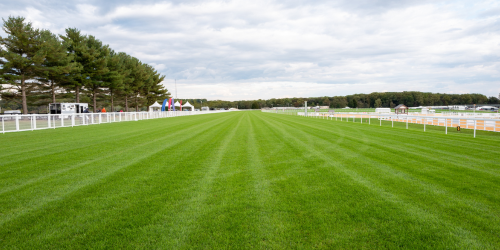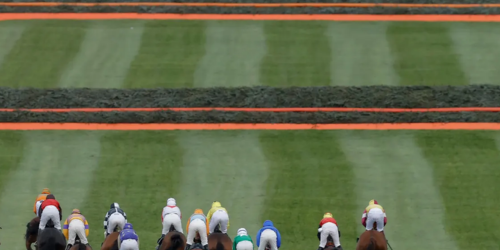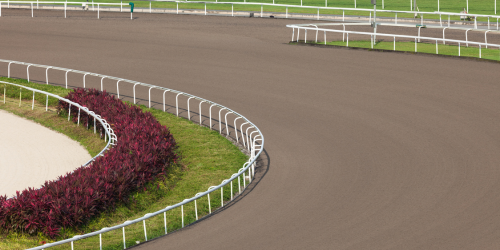Horse racing is a popular sport that has been enjoyed for centuries, with a variety of different tracks and surfaces used around the world. In the UK, horse racing is overseen by the British Horseracing Authority, which sets the standards for tracks and ensures that they are safe and fair for both horses and riders.
There are many different types of horse racing tracks, each with their own unique characteristics and challenges. Some tracks are flat, while others are undulating, and some are left-handed while others are right-handed. The type of track can have a significant impact on the outcome of a race, as different horses and jockeys may perform better on certain surfaces.
When it comes to horse racing in the UK, there are 59 tracks to choose from, each with its own distinct features and challenges. Some tracks are known for their speed, while others are more suited to stamina-based races. Understanding the different types of tracks and surfaces is essential for anyone looking to get into horse racing, as it can help them to make more informed bets and enjoy the sport to the fullest.
Types of Horse Racing
There are three main types of horse racing: Flat Racing, Jump Racing, and Harness Racing. Each type has its own unique characteristics and rules.
Flat Racing
Flat racing is the most popular type of horse racing. It is a race from the starting stalls to the finish line on a flat course with no obstacles. This type of racing is usually held between April and October. Flat races are classified into Group races, Handicap races, and Maiden races. Group races are the most prestigious and are divided into Group 1, Group 2, and Group 3 races. The most famous Group 1 race is The Derby, also known as the Epsom Derby.

Jump Racing
Jump racing, also known as National Hunt racing, takes place between October and April. This type of racing involves horses jumping over hurdles, fences, and chasing over distances ranging from two to four and a half miles. Jump racing is divided into National Hunt Flat races, Hurdles, Fences, and Chases. National Hunt Flat races are for horses that have not yet jumped in a race, while Hurdles are smaller obstacles than fences and Chases are longer races with bigger obstacles.

Harness Racing
Harness racing is a type of racing where horses pull a two-wheeled cart called a sulky while racing. This type of racing is popular in the United States, Canada, and Australia. In harness racing, the driver of the sulky is called a driver, not a jockey.
Overall, each type of horse racing has its own unique characteristics, rules, and betting options. Horse racing is a popular sport worldwide, with many people enjoying the excitement of watching races and wagering on the outcome. The Jockey Club oversees horse racing in the UK, ensuring that all races are run fairly and that the breeding and training of horses is of the highest standard.
Understanding Racecourses
Racecourses are the venues where horse racing events take place. They are designed to test the speed, stamina, and agility of horses, and to provide an exciting spectacle for spectators. Racecourses come in different shapes and sizes, with varying types of ground. In the UK, there are 59 horse racing tracks, ranging from left- and right-handed, flat and undulating circuits, to figure-of-eight tracks.
Turf Tracks
Turf tracks are the most common type of horse racing tracks in the UK. They are made of grass and are usually used for flat racing. Turf tracks can be classified into different types based on the condition of the ground. The official goings for British turf courses are firm (Fm), good to firm (GF), good (Gd), good to soft (GS), soft (Sft), and heavy (Hy). The going stick is used to measure the condition of the turf and to determine the official going.
Turf tracks can have different characteristics depending on the type of ground. For example, firm ground is hard and dry, while soft ground is wet and yielding. The type of ground can affect the performance of horses, with some horses performing better on certain types of ground than others.
All-Weather Tracks
All-weather tracks are designed to provide a consistent racing surface regardless of the weather conditions. They are made of artificial materials such as sand, polytrack, tapeta, or fibresand. All-weather tracks can be used for both flat and jump racing.

All-weather tracks are less affected by weather conditions than turf tracks. They are also less prone to damage from heavy use and can be used year-round. However, the surface of all-weather tracks can be quite different from turf tracks, and some horses may perform differently on all-weather tracks than they do on turf tracks.
In conclusion, understanding the different types of horse racing tracks is important for both horse owners and racing enthusiasts. Knowing the characteristics of each type of track can help to predict the performance of horses and to make informed betting decisions.
